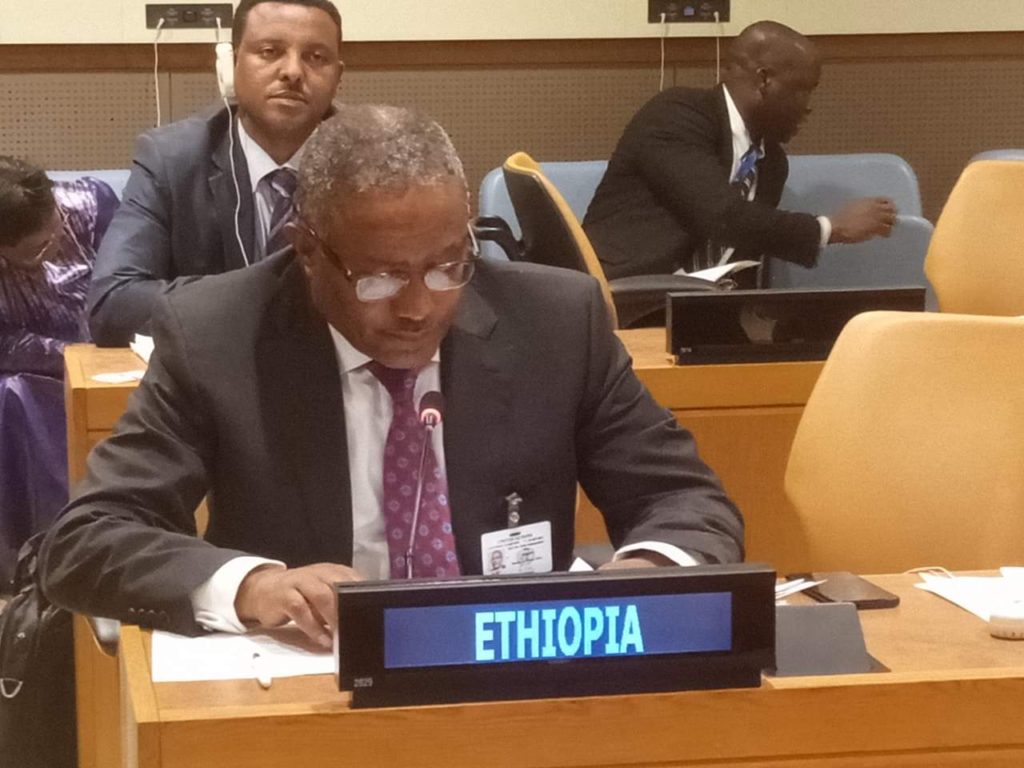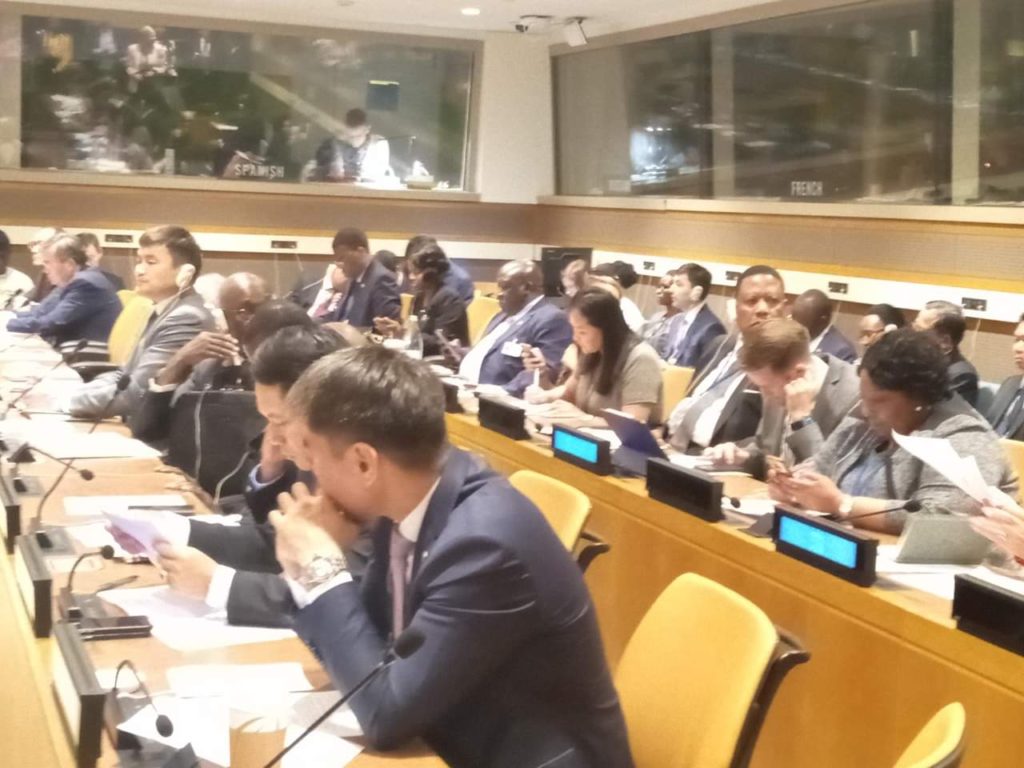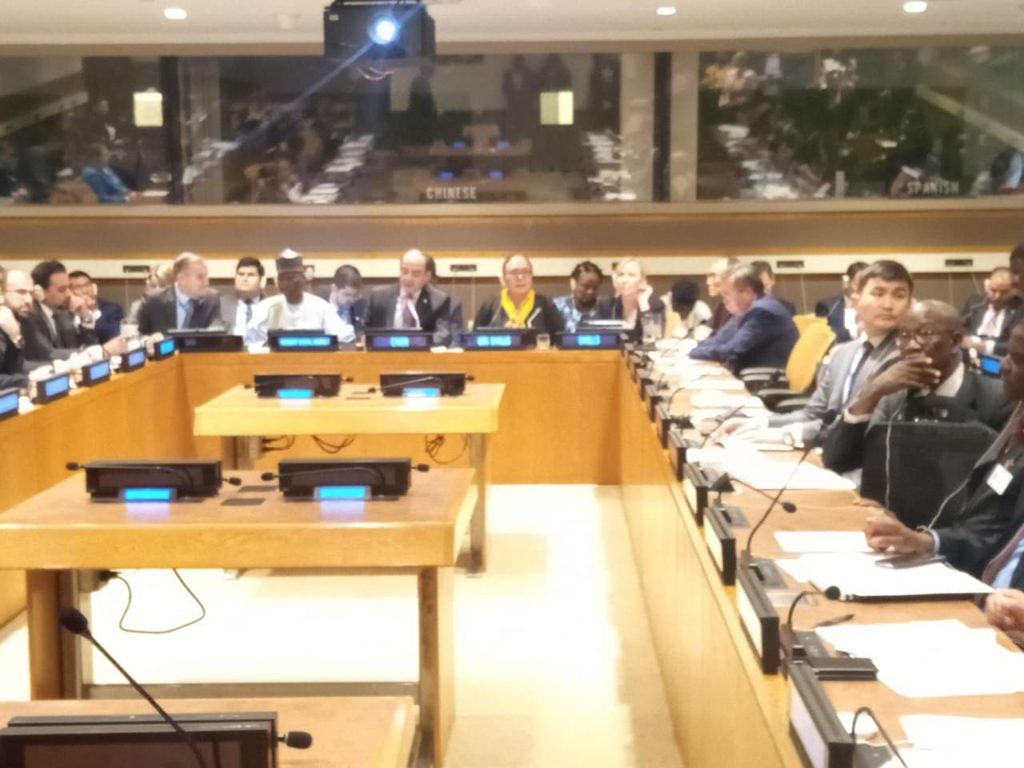The annual Ministerial Meeting of the Landlocked Developing Countries (LLDCs) was held this week on the side-lines of the General Assembly.
Minister Gedu emphasized the multiple development challenges the Landlocked Developing Countries (LLDCs) continued to face because of geographic and other structural obstacles. They might take policy measures to promote structural transformation, diversify economies and increase exports, but they faced particular trade and development-related challenges, including remoteness and high transit costs. These constrained efforts to meet the Vienna Program of Action. LLDC share of global trade remained low. Infrastructural gaps hindered regional integration and slowed structural transformation, and lack of adequate finance and technological and institutional capacity aggravated the problems.
Certainly, he said, achieving inclusive and sustainable development was primarily a national responsibility, but a renewed global partnership with development partners, public and private, was vital to fully achieve the Vienna Program of Action. Coordinated and enhanced international support in manufacturing, trade, and productive capacity to complement national efforts, would contribute significantly. Establishing effective and efficient infrastructure systems and facilitating fast movement of goods and services, with cooperation and partnership of transit countries, was critical for the integration of LLDCs into the global market.
Mr. Gedu emphasized that since the adoption of the Vienna Program of Action, Ethiopia had worked to implement it in line with the national development plan and priorities. Achieving inclusive and sustainable industrialization and building resilient infrastructure were priorities of the Ethiopian government. It was taking policy measures to improve the manufacturing base, and enhance “connectedness as well as competitiveness.” It was giving special attention to labour intensive and light manufacturing sectors, in agro-processing, leather and textiles. It had We established industrial parks to simplify access to land, and assist in logistics and custom services. In addition, the Ethiopian government had also making massive public investment in infrastructure, to enhance productive capacity and promote regional integration. The Minister said there had been encouraging progress in expanding road, railway and air transport services and in working with neighboring countries to establish and maintain effective transit systems on the basis of common interest. In addition, the government has recently taken bold decisions to diversify sea outlets and further promote regional integration.
This amounted to some progress, but, he added, there was still a lot to be done to realize inclusive and sustainable development in Ethiopia. The Minister reaffirmed Ethiopia’s
commitment and readiness to redouble efforts to fully implement the Vienna Program of Action and the Sustainable Development Goals in close collaboration with development partners.
The world’s landlocked countries, whose populations amount to about 440 million, face a whole series of challenges associated with their lack of direct territorial access to the sea and remoteness from world markets. The dependence on other countries for international trade is an additional problem. The Vienna Program of Action for Landlocked Developing Countries for the Decade 2014-2024 came out of the second UN Conference on Landlocked Developing Countries, held in Vienna in 2014. It addresses the challenges landlocked countries face and aims to contribute to the eradication of poverty, through the implementation of specific actions in priority areas.
The six priorities it identified were: Fundamental transit policy issues; Infrastructure development and maintenance, in transport infrastructure and energy and information and communications technology infrastructure; International trade and trade facilitation; Regional integration and cooperation; Structural economic transformation and Means of implementation. These allowed for an emphasis on development and expansion of efficient transit systems and transport development, enhancement of competitiveness, expansion of trade, structural transformation, regional cooperation, and the promotion of inclusive economic growth and sustainable development to reduce poverty, build resilience, bridge economic and social gaps and ultimately help transform those countries into land-linked countries.
MoFA





